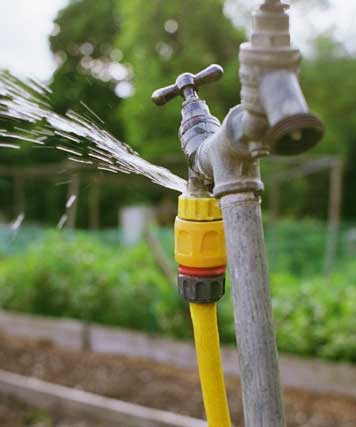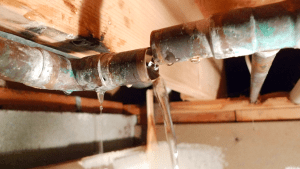6 Ways to Locate Concealed Water Leaks in Your House
6 Ways to Locate Concealed Water Leaks in Your House
Blog Article
They are making a number of great pointers related to Detecting hidden plumbing leaks in general in this post further down.

Early discovery of dripping water lines can mitigate a prospective calamity. Apart from saving you money, it will lessen the irritation as well as irritation. The minute you locate a leakage, calling your plumber for repair work is the best remedy. However, some tiny water leakages may not be visible. Here are some hacks that aid if you can not identify it with your naked eyes.
1. Take A Look At the Water Meter
Every home has a water meter. Inspecting it is a guaranteed way that helps you discover leakages. For starters, turn off all the water resources. Make sure no one will purge, utilize the faucet, shower, run the cleaning device or dishwashing machine. From there, go to the meter and also watch if it will change. Because nobody is utilizing it, there must be no motions. If it relocates, that shows a fast-moving leak. Likewise, if you identify no changes, wait an hour or 2 as well as examine back again. This means you might have a slow-moving leak that can also be below ground.
2. Inspect Water Intake
If you identify abrupt adjustments, despite your usage being the exact same, it indicates that you have leakages in your plumbing system. An abrupt spike in your bill indicates a fast-moving leakage.
Meanwhile, a steady boost on a monthly basis, despite having the same practices, shows you have a sluggish leak that's likewise gradually escalating. Call a plumber to thoroughly inspect your property, particularly if you feel a cozy area on your flooring with piping below.
3. Do a Food Coloring Examination
When it comes to water intake, 30% originates from bathrooms. Examination to see if they are running effectively. Decrease specks of food shade in the container as well as wait 10 minutes. There's a leak between the container as well as bowl if the shade in some way infiltrates your bowl throughout that time without flushing.
4. Asses Outside Lines
Do not forget to inspect your exterior water lines too. Must water permeate out of the link, you have a loosened rubber gasket. One tiny leak can lose tons of water and surge your water bill.
5. Evaluate and also Analyze the Scenario
Homeowners must make it a behavior to check under the sink counters and even inside cupboards for any type of bad odor or mold and mildew growth. These two red flags suggest a leakage so timely interest is needed. Doing regular examinations, also bi-annually, can conserve you from a significant problem.
Check for stainings as well as compromising as most pipelines as well as appliances have a life expectations. If you think dripping water lines in your plumbing system, don't wait for it to escalate.
Early discovery of leaking water lines can minimize a prospective disaster. Some small water leaks might not be visible. Examining it is a guaranteed method that aids you discover leaks. One small leak can squander heaps of water as well as surge your water bill.
If you suspect dripping water lines in your plumbing system, do not wait for it to intensify.
How to Know If Your Home Has a Hidden Leak
Water Meter Reveals Inexplicable Water Usage
If you’d like to test whether or not there’s a leak somewhere in your home, you can do this using your water meter. Here is how to conduct the test:
Don’t use any water in your home for at least 30 minutes; this also means not turning on faucets or water-using appliances.
Go outside, and check your water meter for activity.
If your water meter shows that there was activity, even though no one was using any water, this proves that there is a leak in your home.Visible Mold or Mildew Growth
Leaks behind walls create moist, dark environments that allow mold and mildew to grow and thrive. Eventually, you might see mold growth forming on the wall closest to a hidden leak.
If mold is growing in an area that receives a high amount of moisture, such as a bathroom, it may simply be an indication that better ventilation is needed. However, if you see mold growth on a wall or the ceiling in an area where you would not expect, you probably have a hidden leak.
Musty, Mildew Odor
Sometimes you might not be able to see the mold or mildew that is growing as a result of a leak. However, the smell can give the problem away just as easily. If you catch a whiff of something musty, there’s a good chance that old water is collecting somewhere in your home that you can’t see.
Stained/Warped Walls, Ceilings, or Floors
When your home soaks up water, a variety of red flags can become visible, including ceiling stains, bubbling drywall, warped walls, and sagging floors. While these issues can be caused by excess humidity, they can also be signs that a pipe or plumbing connection has started leaking behind your walls.
Inexplicably High Water Bill
After a while, you get a general sense for what your water bill should be. If you own a pool or sprinkler system, your bill will tend to be higher during summer. However, if you receive a water bill that seems especially high, and you can’t figure out what caused it, then you may have a hidden leak somewhere that’s increasing your bill.
https://www.plumbingjoint.com/blog/2019/july/how-to-know-if-your-home-has-a-hidden-leak/

We hope you liked our piece about Detecting hidden plumbing leaks. Thanks so much for taking a few minutes to browse our content. Feel free to set aside a second to share this content if you enjoyed reading it. Thank you for your time spent reading it.
Report this page